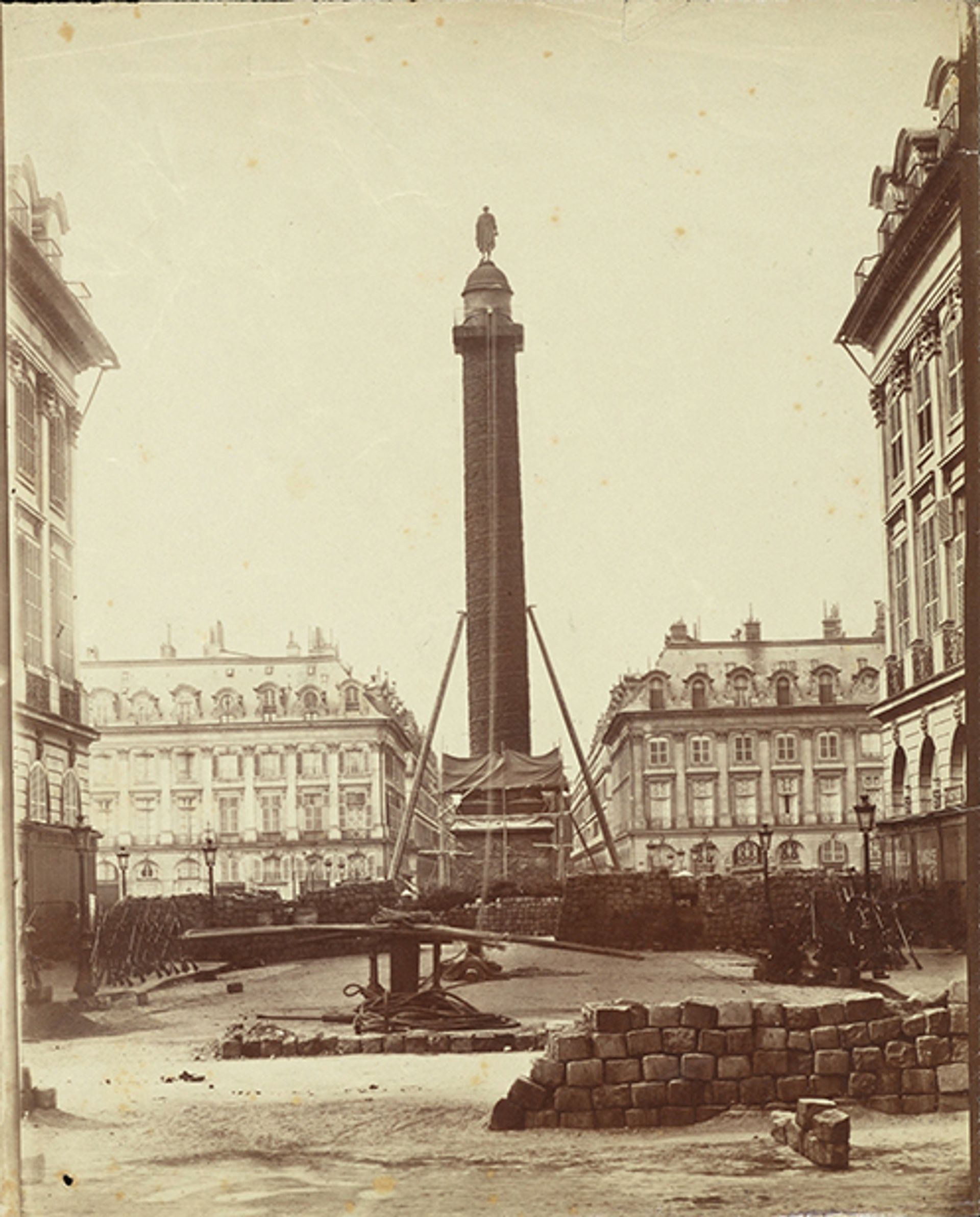
Monumentality. Getty Research Institute, Getty Center (Until 21 April): The Getty Research Institute (GRI) is wading into the contentious monuments debate with an exhibition that asks why some monuments endure while others do not. Historic photographs, prints, political ephemera, books and contemporary works by Theaster Gates, Ed Ruscha and Tacita Dean, among others, “take a broad view of both the varied life of monuments and the concept of the monument from the classical to the contemporary”, says the GRI’s acting director Andrew Perchuk. Monuments include the Nazca lines, Peru’s 2,200-year-old geoglyphs; a statue of Napoleon pulled down during the 1871 Paris Commune; and Gates’s Dancing Minstrel (2016), an oversized bobble-head of a black minstrel which the artist has deconstructed as an act of stripping it of its racist stereotype. The Vendom Column, photographed by Bruno Braquehais, was toppled in 1871 during the Paris Commune. Photo: © Getty Research Institute, Los Angeles
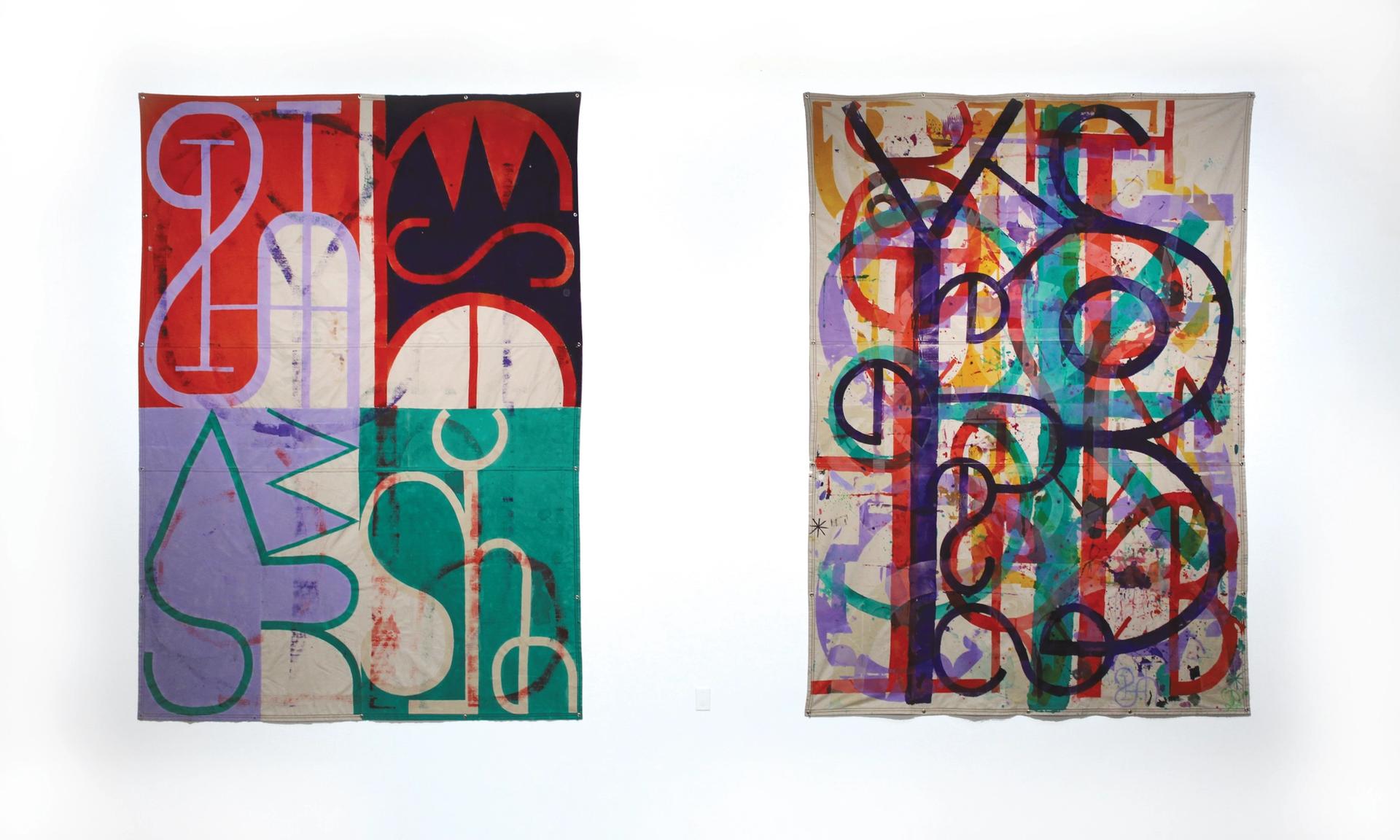
Elijah Burgher: Four Paintings. LAXART (Until 17 February): An artistic coda to LAXART’s collaborative group exhibition Sperm Cult, which closed in January, the works in this show were created by the Berlin-based Elijah Burgher while he was in residency in Los Angeles last autumn, thanks to a grant from the Mike Kelley Foundation. Burgher’s interest in the occult and queer sex magic comes through the raw canvases, which are meant to serve as “visual hexes” painted with the artist’s own “arcane language” of symbols. They also serve as a backdrop for LAXART’s Winter Event Series, which runs through this week at the non-profit art space and at Frieze Los Angeles. Photo: Courtesy of the artist and MoCA
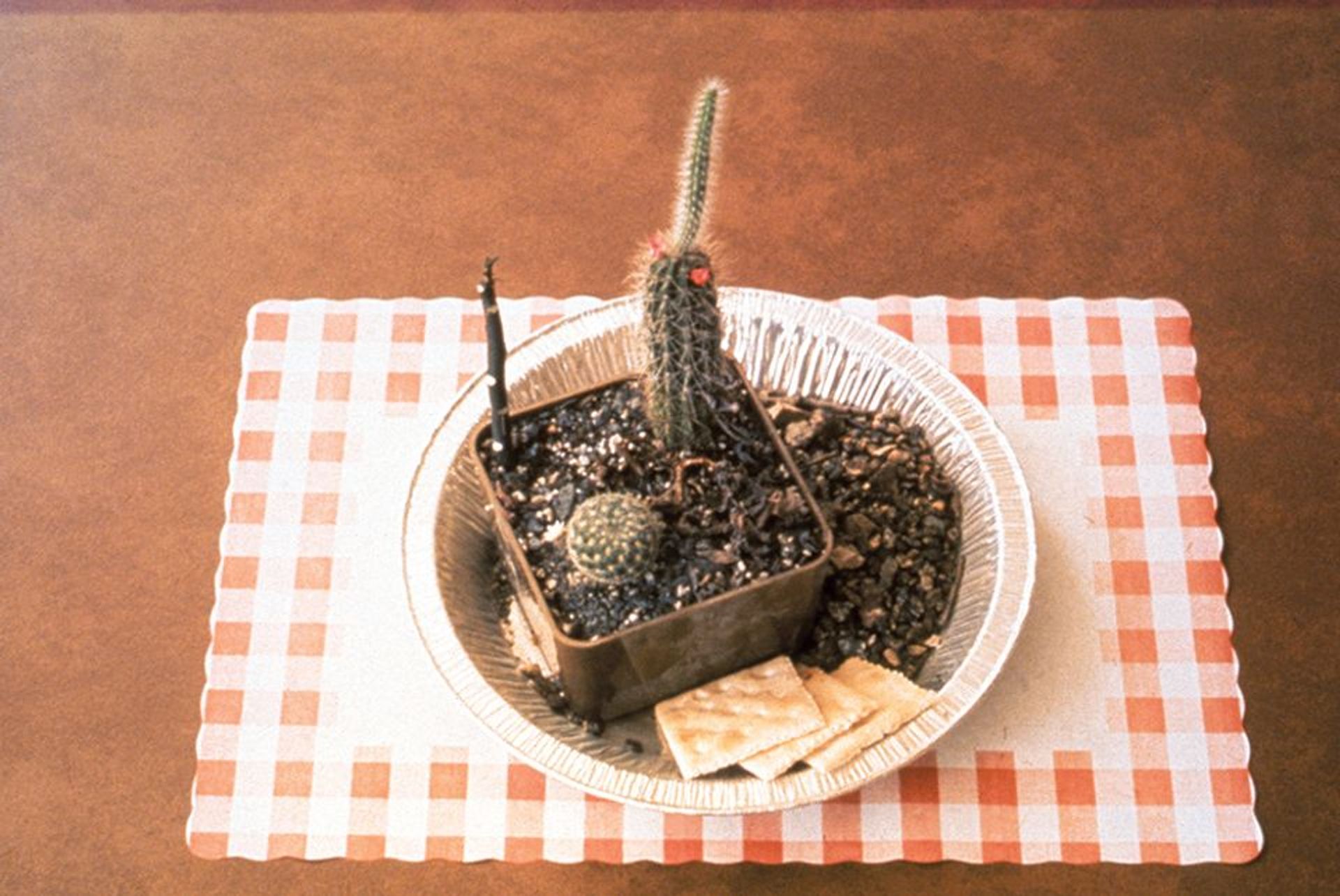
Allen Ruppersberg: Intellectual Property 1968-2018, Hammer Museum (February 10-12 May): “The strength of Ruppersberg’s work is that it has managed to be accessible through references to American vernacular and literary histories while also being of a hardcore conceptual bent,” says Aram Moshayedi, the curator of the Hammer Museum’s retrospective dedicated to the hometown hero Allen Ruppersberg: his first comprehensive one in the US since 1985, when a mid-career survey was mounted by the Museum of Contemporary Art, Los Angeles. (This exhibition debuted at Minneapolis’s Walker Art Center in 2018.) While 1960s Conceptual artists in New York, London and Europe tended to approach language from a philosophical or Structuralist position, Ruppersberg was always more interested in literary fiction, screenwriting and poetry—not to mention wry humour. Born in 1944, Ruppersberg has long been a mythical presence in the Los Angeles art world—which was perhaps his intention. “Evasion has always been part of his work,” Moshayedi says. The artist once listed his influences as “youth, serial killers, magic, movies and film history, Raymond Roussel, reading and looking, fate, suicide, the fountain of youth, surrealism, fiction and reality, high and low cultures, hell, Hollywood, Bible stories and horrific current events”. Over the past five decades he has pursued these interests quietly, often seemingly from the margins, operating from rented offices and moving frequently between California, New York and Europe. Where’s Al? (1972/2006) is the title of an early installation of typed index cards and photographs, a landmark piece included in this show. Allen Ruppersberg's Meals from Al’s Cafe (1969) Credit: Courtesy the artist. Photo: Gary Krueger, scan: Augusta Wood
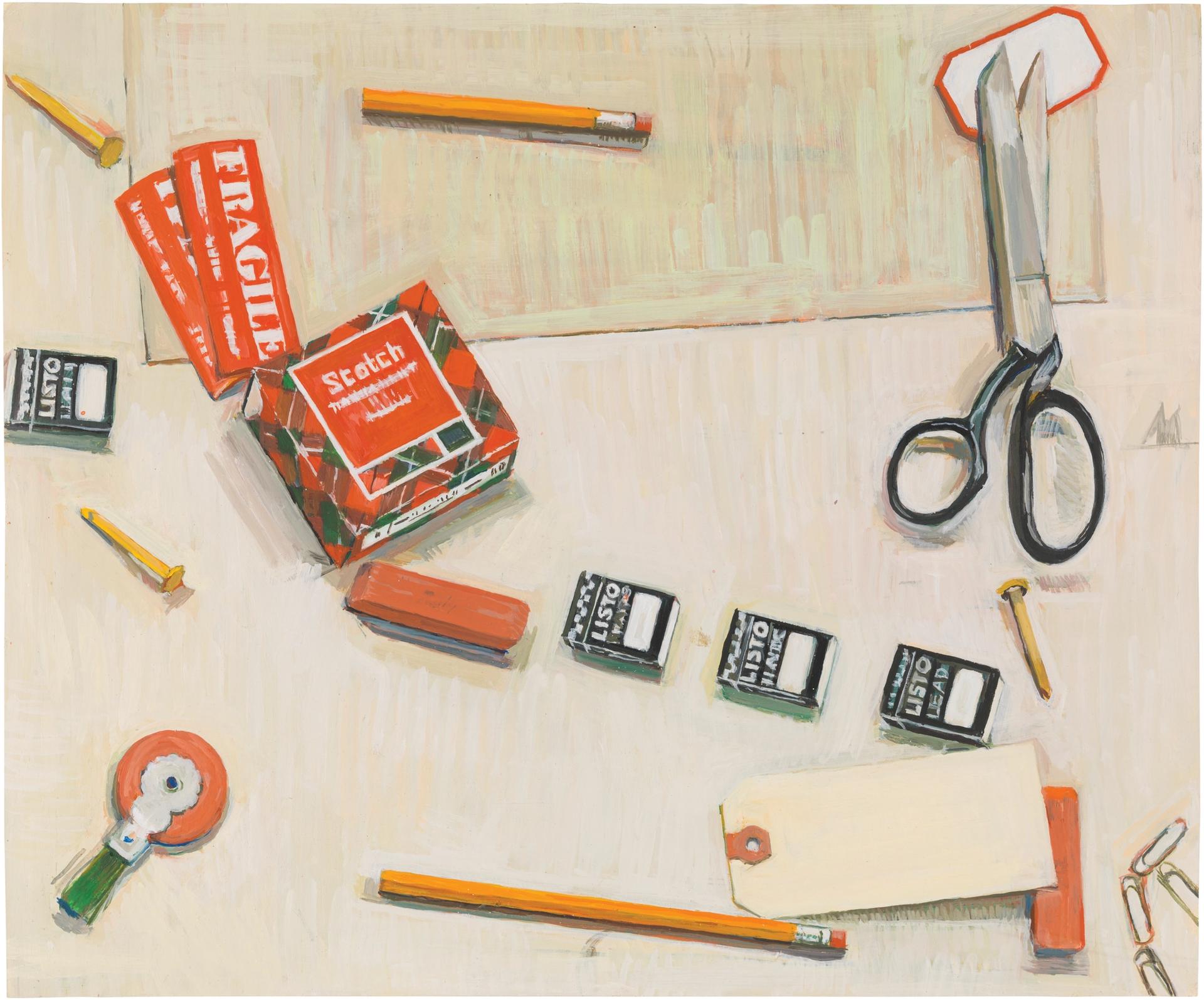
One Day at a Time: Manny Farber and Termite Art. Museum of Contemporary Art (MoCA), Grand Avenue (Until 11 March): The late painter and film critic Manny Farber—who in 1962 wrote the underground essay White Elephant Art vs Termite Art—mainly defined termite art by its opposite, stating that it does not strive to be a masterpiece. In the catalogue for this show, featuring work by Farber and other artists, the museum’s former chief curator Helen Molesworth similarly writes: “In a nutshell, “[termite art] can perhaps be described as [a work of art] that dives deep into—and is fascinated by—banal or minute details, arriving at that subject matter which might otherwise be typically overlooked.” The show describes the phenomenon by example, with one of the most telling choices being Wolfgang Tillmans and his diaristic photos of half-eaten meals and cluttered desks or tables. It also nods to the oddly comic rhythms of daily life with a selection of Fischli & Weiss’s Suddenly This Overview (1981-2010): 20 small unfired clay vignettes, including one of Albert Einstein’s parents asleep in bed. After all, what could be more ordinary than a couple sleeping, even if they are on the verge of creating a genius? Manny Farber's Listo Leads (1976) documents the banality of everyday life. Photo: © Collection of Madeleine Grynsztejn and Tom Shapiro
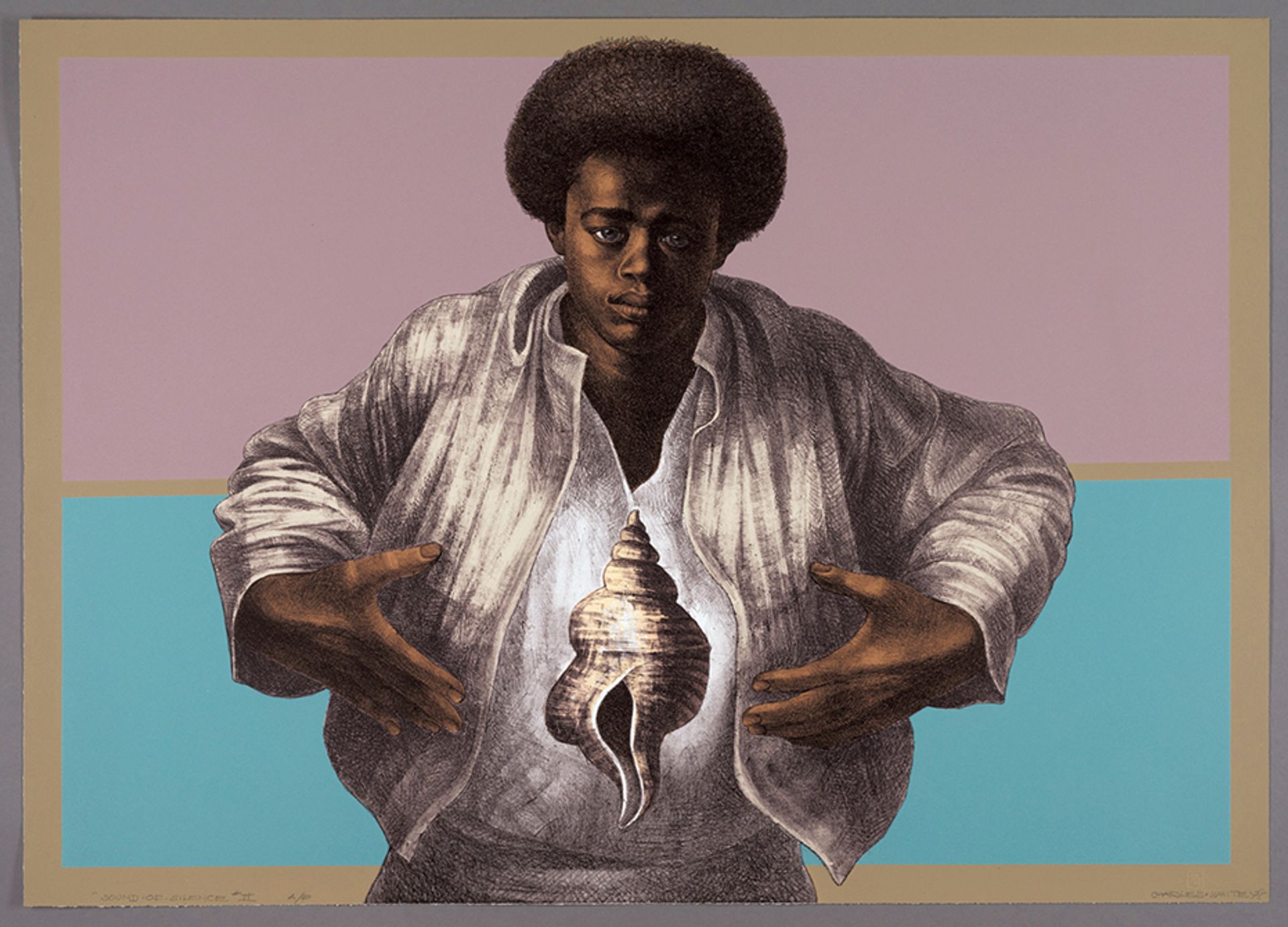
Charles White: a Retrospective. Los Angeles County Museum of Art (17 February-9 June) Los Angeles’s museums are celebrating the life and legacy of Charles White (1918-79) with a trio of exhibitions, including a 100-piece career retrospective at the Los Angeles County Museum of Art. The artist and activist is known for creating paintings, drawings and murals over a 40-year period that chronicled African-Americans’ struggle for equality. White was active in the Chicago Black Renaissance movement through the 1930s before moving to New York in 1942. Health reasons brought White to Los Angeles in 1956 and his impact on students at the Otis College of Art and Design is explored in Life Model: Charles White and His Students at Charles White Elementary School Gallery (16 February-15 September). Finally, on 6 March, the California African American Museum will open Plumb Line: Charles White and the Contemporary (until 25 August), which looks at work by contemporary artists that resonates with White’s oeuvre. Works such as White's Sound of Silence (1978) highlight the struggle for African-American equality. Photo: © The Charles White Archives. Courtesy of the Art Institute of Chicago
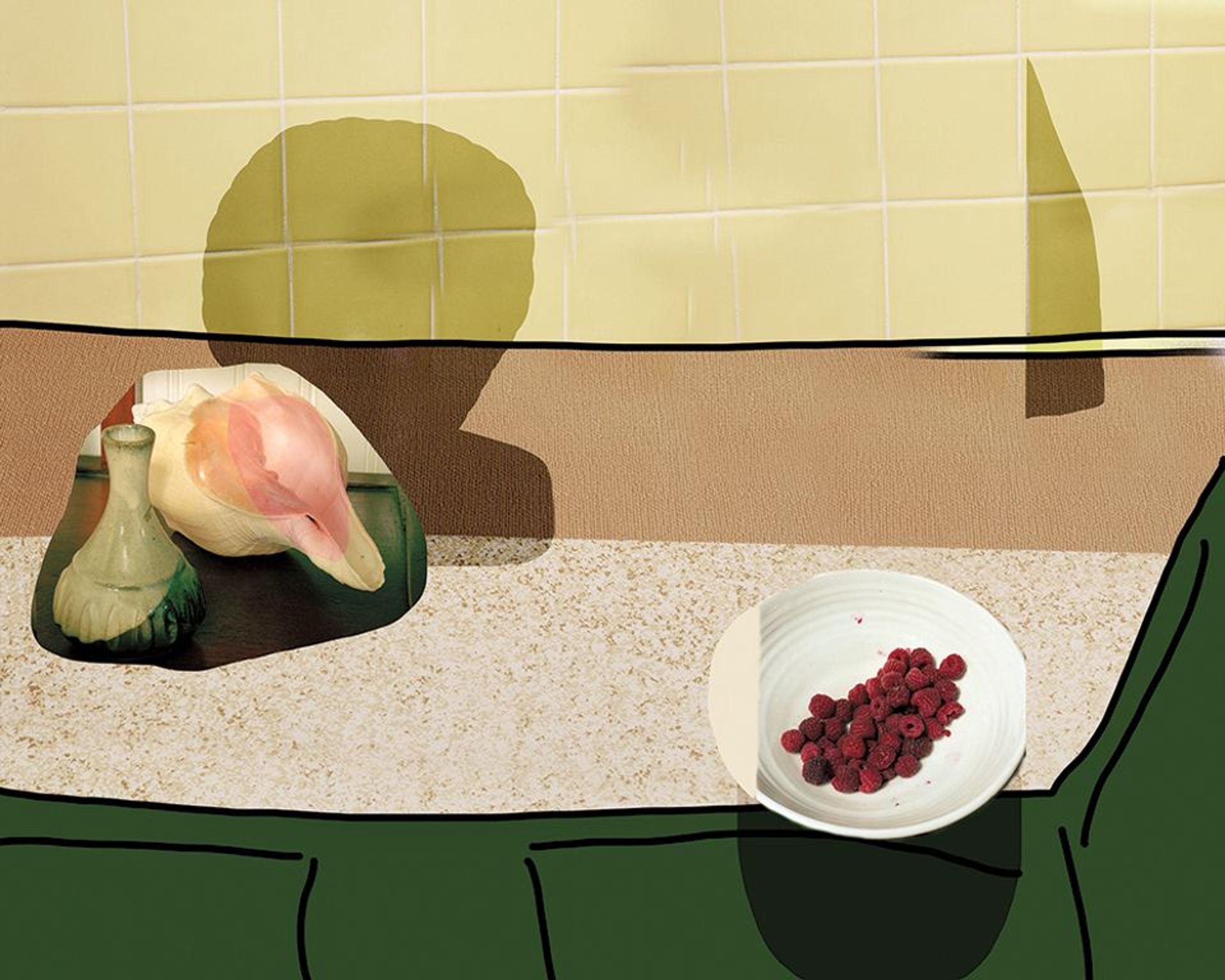
Lucas Blalock: an Enormous Oar, Institute of Contemporary Art, Los Angeles, (10 February-21 July). “I really like objects that have a pathetic quality,” Lucas Blalock said in an interview in 2016. The US photographer was explaining his interest in working with ordinary items that are not made to be looked at but rather “still have something left to be discovered within them”. The 41-year-old artist takes these unassuming objects, such as a stick of chewing gum and garden gloves, and makes them “sing” with the help of cutting-edge imaging software. But unlike the Photoshopped images that mask all traces of manipulation that we are accustomed to seeing on Instagram and in advertisements, Blalock’s pictures are surreal, often humorous, and proudly lay bare the photographic processes used in his digital interventions. More than 20 photographs have been assembled at the Institute of Contemporary Art (ICA), Los Angeles for Blalock’s first solo exhibition at a US museum. The show, organised by the ICA’s curator Jamillah James, focuses on portraits, domestic scenes and still-lives, including the 2015-17 work Conch and Berries, all made within the past five years. Lucas Blalock's Conch and Berries (2015-2017). Courtesy of the artist and Galerie Eva Presenhuber, Zurich
Monumentality. Getty Research Institute, Getty Center (Until 21 April): The Getty Research Institute (GRI) is wading into the contentious monuments debate with an exhibition that asks why some monuments endure while others do not. Historic photographs, prints, political ephemera, books and contemporary works by Theaster Gates, Ed Ruscha and Tacita Dean, among others, “take a broad view of both the varied life of monuments and the concept of the monument from the classical to the contemporary”, says the GRI’s acting director Andrew Perchuk. Monuments include the Nazca lines, Peru’s 2,200-year-old geoglyphs; a statue of Napoleon pulled down during the 1871 Paris Commune; and Gates’s Dancing Minstrel (2016), an oversized bobble-head of a black minstrel which the artist has deconstructed as an act of stripping it of its racist stereotype. The Vendom Column, photographed by Bruno Braquehais, was toppled in 1871 during the Paris Commune. Photo: © Getty Research Institute, Los Angeles
Six shows to see during Frieze Los Angeles
From a Charles White retrospective to raw canvases inspired by the occult and queer sex magic
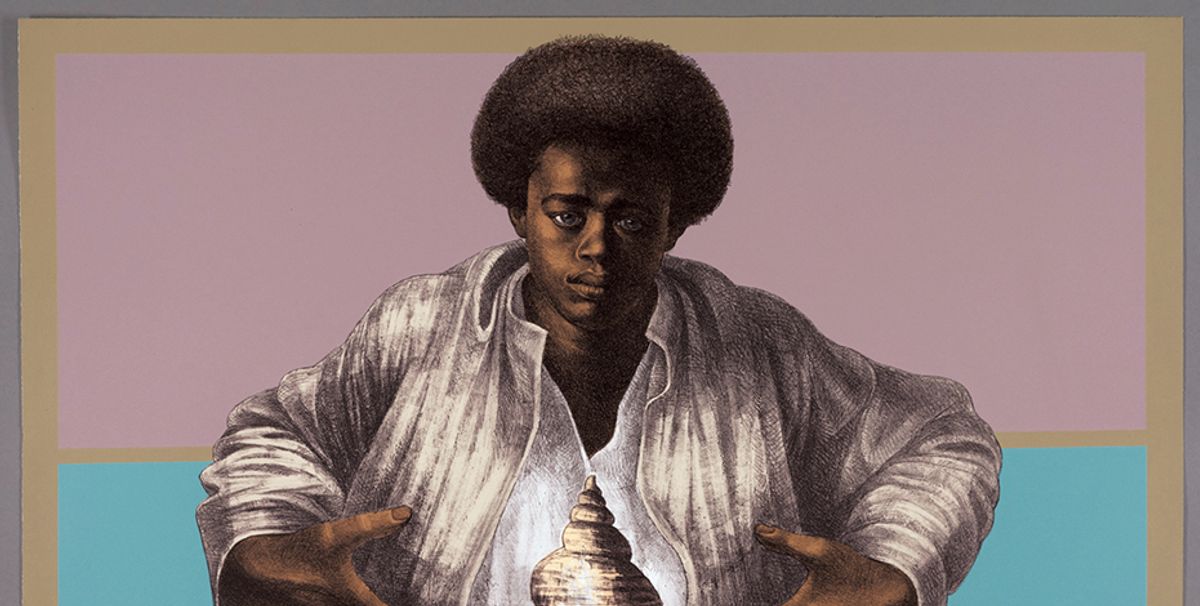
Charles White's Sound of Silence (1978) © The Charles White Archives. Photo: The Art Institute of Chicago

